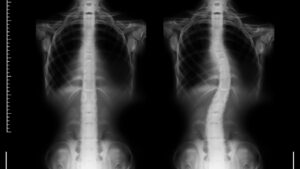Tendon pain, tendon pathology, tendon injuries, tendinitis, and tendinopathy all refer to the same thing, and that is the inflammation of the strong fibrous cords that connect our bones and muscles together.
Tendon pain can happen in any part of the body. However, some of the most common areas that we see are golfers’ elbows, tennis elbows, rotator cuff injuries, jumper’s knees, and Achilles tendinopathy. We understand the impact of tendon pain.
While most tendon pain goes away on its own with proper rest and therapy, the recovery process can often render us incapable of performing even the simplest tasks, like opening a jar of peanut butter.
In this article, we have compiled 5 valuable perspectives and tips from chiropractors that can help you understand tendon pain better.
1. Pain is the primary symptom of tendon injury. However, tendon injuries can happen even without pain.
Many patients would complain that their tendon injuries began a week ago. For most situations, that is not particularly true. First of all, we have to understand that while tendon injuries can happen overnight, they are usually caused by repetitive overload and overstrain of the affected region.
Secondly, tendon injuries occur in three key stages: reactive, disrepair, and degenerative. It is only in the reactive or degenerative stage that tendon pain occurs. This means that it is possible to experience a tendon injury without tendon pain.
2. Tendon pain is real, but it is not the only aspect of recovery.
We understand that tendon pain is real and that it can be debilitating at times. However, pain relief is not the only aspect of recovery. Tendon pain can render us incapable of performing the simplest tasks, such as climbing the stairs, raising our arms, or even turning the doorknob.
Your recovery should be more than just finding quick solutions in relieving your pain. It should target a holistic approach of targeting the root issue, allowing for long-term results.
3. Tendons are made for tensile loading.
Based on the designs of the fibrous tissues in our tendons, they are made for tensile loading. What does that mean? Imagine storing energy and releasing it with explosive power. Before we jump, we adopt a squatting position, in which our tendons store energy. This energy is released from our tendons when we jump.
Tendon pain can occur when we cross the threshold for our tendon to handle, causing inflammation and micro tears. This is quite a common occurrence among individuals or athletes who make a sudden increase in their physical activities without enough conditioning or make unexpected, sudden movements that place excessive pressure on their tendons.
4. Slow progressive loading and eccentrics should be the way to go.
Slow progressive loading and eccentric exercises should be a part of your rehabilitation process. In fact, these effective approaches are formed by the understanding of how our tendons respond to certain physiological processes and mechanical stresses that are involved when our tendons repair and adapt.
Slow progressive loading allows our tendons to adapt to the gradual increase of the mechanical loads, strengthening them without causing further tendon injuries. Progressive loading also stimulates collagen production, which is the primary structural protein found in tendons. This allows your injured tendon to repair and reinforce itself.
Eccentric exercises involve the lengthening of our tendon-muscle units. Eccentric exercises encourage the collagen fibres within our tendon to align themselves with the direction of the tensile force, which is vital for boosting the tensile strength of the tendon, as well as its efficiency in converting the energy needed for strength.
5. Surgery is not necessarily the best recovery option.
Recovery is not just about finding the quickest option. The best recovery approach comes with targeting the root issue and making informed decisions that are based on understanding the cause of your tendon pain.
Recovery can take a long time, and depending on the severity of your injuries, it can take anywhere from a couple of weeks to even months. However, chiropractic care can help to speed up your recovery process without the need for surgery, steroid injections, or medications.
Using exercises and manual adjustments, chiropractors are able to break up tendon scar tissues and reduce inflammations, returning normal functions to the affected region. Some chiropractors may even employ the use of low-level laser and e-stim therapy to assist with the repairing of injured tissues.
Conclusion
Tendon pain is real, and it can impact our daily lives. While it may go away on its own after some rest, it is not a quick process, and you will have to bear with the pain. As such, why not consider chiropractic care? Not only does chiropractic care offer instant pain relief, but it also offers a long-term management plan that strengthens your tendon in the long run.
Here at Healing Hands Chiropractic, we understand the importance of a holistic approach. More than just a quick chiropractic adjustment, we also ensure that their overall well-being is taken into account. We offer a wide range of treatment, from lower back pain treatment and knee pain treatment to pinched nerve treatment and sciatica treatment. Contact us to experience a holistic change!



